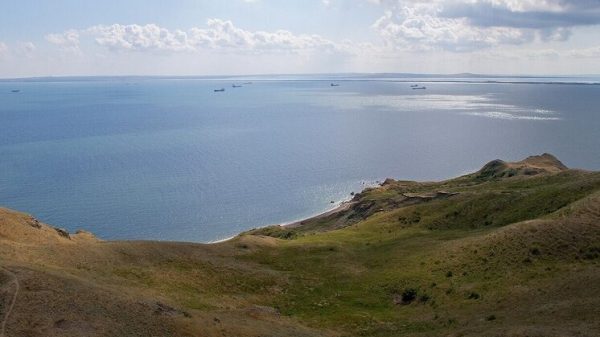Unusual find may shed light on dinosaur secrets
A surprisingly well-preserved skull of a giant pliosaur, a prehistoric sea monster, has been discovered on a beach in Dorset in southern England, and it may reveal secrets these awe-inspiring creatures long gone.

Pliosaurs dominated the oceans at a time when dinosaurs roamed the land. The fossil found is about 150 million years old, which is almost 3 million years younger than any other pliosaur found. Researchers are analyzing the specimen to determine whether it may even be a species new to science, CNN reports.
Originally discovered in the spring of 2022, the fossil, as well as its complex excavation and ongoing scientific research, are now detailed in an upcoming documentary BBC's Attenborough and the Jurassic Sea Monster, presented by legendary naturalist Sir David Attenborough, will air on PBS on 14 February.
The size of the carnivorous marine reptile was so enormous that a skull dug out of a rock along the “Jurassic coast” in Dorset was almost 2 meters long. In its fossilized form, the specimen weighs more than half a ton. According to Encyclopedia Britannica, the pliosaur species could grow up to 15 meters in length.
The fossil was buried deep in the rock, about 11 meters above the ground and 15 meters down the slope, local paleontologist Steve Etches told CNN. helped discover it.
Retrieving it proved a risky task, fraught with danger, as the team worked ahead during a period of good weather before summer storms hit and the rock eroded, possibly taking the rare and valuable fossil with it.
Etches first learned about the existence of the fossil when his friend Philip Jacobs called him after coming across a pliosaur head on the beach. From the start, they were “very excited because its jaws closed, indicating that (the fossil) was complete,” Etches said.
After using drones to map the cliff and determine the exact location of the rest of the pliosaur, Etches and his team began a three-week operation, carving into the rock while suspended in the air.
“It's a miracle that we they pulled it out,” he said, “because we had the last day to get this thing out, which we did at 9:30 p.m.”
The engravings took on the task of painstaking restoration of the skull. There was a time he found “very frustrating” as the dirt and bones cracked, but “in the days and weeks that followed it was a case of… like a jigsaw puzzle, putting it all back together. It took a long time, but we got every piece of bone back.”
It was “a freak of nature” that the fossil was preserved in such good condition, Etches added. “It died in the right environment, there was a lot of sediment… so when it died and sank to the seabed, it got buried pretty quickly.”
The nearly intact fossil sheds light on the characteristics that made the pliosaur a truly formidable predator, hunting prey such as the dolphin-like ichthyosaur. According to the documentary, the top predator with huge, razor-sharp teeth used a variety of senses, including sensory pits still visible on its skull that may have allowed it to detect changes in water pressure.
According to Emily Rayfield, a professor of paleobiology at the University of Bristol in the United Kingdom who appeared in the documentary, the pliosaur's bite was twice as strong as that of a saltwater crocodile, which has by far the most powerful jaws in the world. She said a prehistoric sea predator could have crashed into a car.
Andre Rowe, a research fellow in the paleobiology department at the University of Bristol, added that “the animal would have been so massive that I think it could have hunted effectively for everything that, unfortunately, ended up in his space.”
























































Свежие комментарии